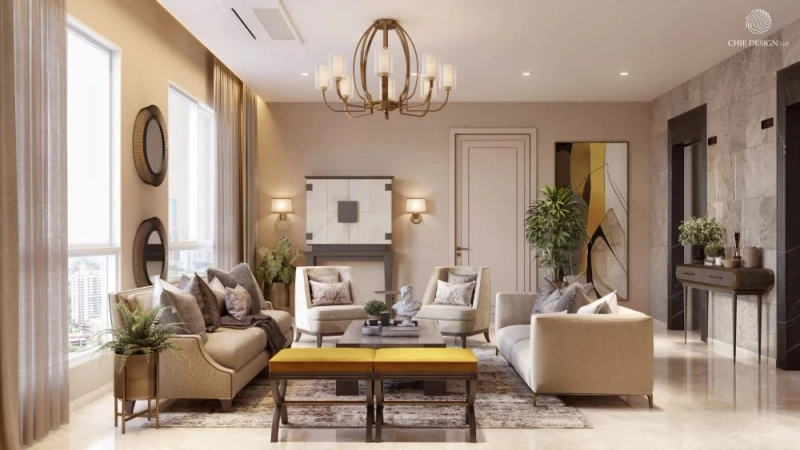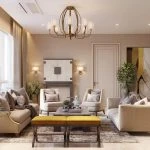Introduction
Transforming your home into your dream space can be a daunting task, especially if you don\'t have any interior design knowledge. However, with the right guidance, you can create an interior that reflects your personality, lifestyle, and preferences. This article provides tips on using interior design principles to transform your home.
Understanding Interior Design Principles
Interior design principles refer to a set of guidelines that help interior designers create spaces that are functional, aesthetically pleasing, and comfortable. These principles include:
Balance
Balance refers to the distribution of visual weight in a space. A well-balanced interior feels stable and harmonious. There are two types of balance: symmetrical and asymmetrical. Symmetrical balance involves placing identical items on either side of a central point, while asymmetrical balance involves creating balance through the use of different objects of equal visual weight.
Proportion and Scale
Proportion and scale refer to the size and relative size of objects in a space. A well-proportioned space feels balanced and harmonious. Large objects should be balanced with smaller objects, and vice versa.
Harmony and Unity
Harmony and unity refer to the overall feeling of a space. A harmonious space feels cohesive and well-coordinated. Unity is achieved through the use of color, texture, pattern, and other design elements.
Rhythm and Repetition
Rhythm and repetition refer to the visual flow of a space. A well-designed space has a sense of movement and continuity. Rhythm is created through the use of pattern, color, and texture, while repetition is achieved by using the same design element multiple times.
Emphasis and Contrast
Emphasis and contrast refer to the use of focal points in a space. A focal point draws the eye and creates visual interest. Contrast is achieved by using different design elements to create a visual impact.
Transforming Your Home with Interior Design Principles
Transforming your home into a space that reflects your personality and lifestyle can be achieved by applying interior design principles. Here are some tips on how to transform your home:
Hire a Residential Interior Designer
Working with a residential interior designer is the best way to transform your home. An interior designer will help you create a space that is functional, aesthetically pleasing, and comfortable. They will also help you select furniture, accessories, and decor that reflect your personality and lifestyle.
Create a Mood Board
A mood board is a collection of images, colors, textures, and patterns that represent your design style. Creating a mood board will help you visualize your design style and make informed decisions when selecting furniture, accessories, and decor.
Choose a Color Scheme
Choosing a color scheme is an important aspect of interior design. A well-coordinated color scheme can create a cohesive and harmonious space. When selecting a color scheme, consider the mood you want to create and how the colors will interact with each other.
Focus on Lighting
Lighting is an essential aspect of interior design. It can create mood, highlight focal points, and enhance the overall aesthetic of a space. Consider using a mix of ambient, task, and accent lighting to create a well-lit space.
Mix and Match Textures and Patterns
Mixing and matching textures and patterns can create visual interest and depth in a space. When selecting textures and patterns, consider how they will complement each other and create a cohesive look.
Use Art and Accessories
Art and accessories can add personality and visual interest to a space. Consider selecting pieces that reflect your design style and create a focal point in the room.
FAQs
Can I still incorporate my personal style in my home design?
Yes, you can still incorporate your personal style in your home design. A good interior designer will work with you to understand your design preferences and incorporate them into the design.
How do I select the right furniture for my space?
When selecting furniture for your space, consider the size, scale, and style of your room. Furniture should be functional, comfortable, and aesthetically pleasing.
How much does it cost to work with a residential interior designer?
The cost of working with a residential interior designer varies depending on the scope of the project, the designer\'s experience, and the location. It\'s important to discuss fees and budget with the designer before beginning the project.
Conclusion
Transforming your home with interior design principles can create a space that reflects your personality, lifestyle, and preferences. Understanding design principles such as balance, proportion, and harmony can help you create a well-coordinated and aesthetically pleasing space. Hiring a residential interior designer can also help you achieve your design goals and make informed decisions. Remember to incorporate your personal style and preferences in the design process to create a space that you love.




